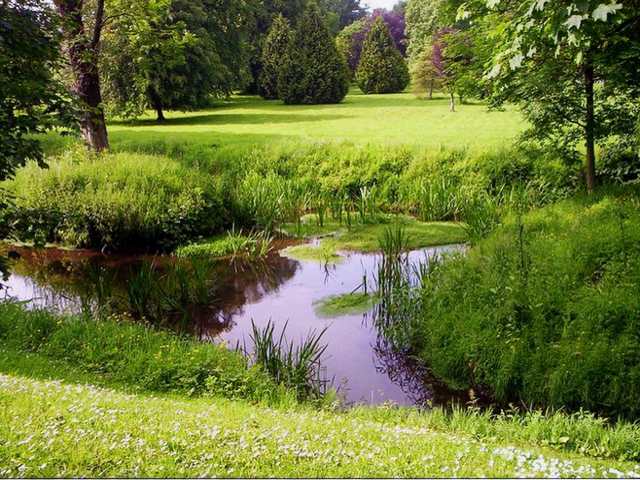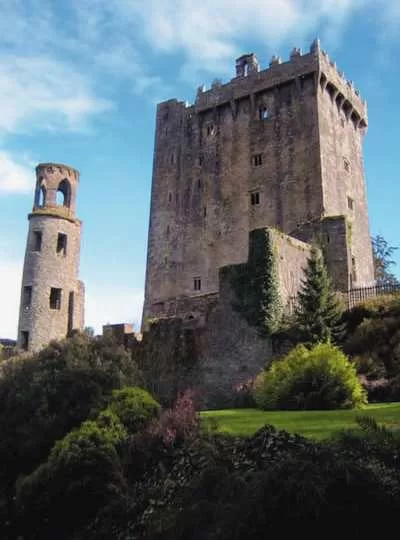Blarney Castle in County Cork, Ireland, is renowned for the Blarney stone, granting “the gift of gab” to those who kiss it. However, beyond this famed tradition lies a captivating legend and a real curse associated with the castle.
Table of contents
The Legend of Blarney Castle
Built around 1446 by Comac MacCarthy, an Irish chieftain, Blarney Castle’s history intertwines with a tale of wit and diplomacy. Faced with a threat from Queen Elizabeth I, Comac sought a way to persuade her envoy, the Earl of Leicester, to spare his lands and rights. Legend has it that an old woman, believed to be the goddess Clíodhna, revealed to Comac that kissing the Blarney stone on the castle’s parapet would grant eloquent speech.
Comac followed this advice, charming Leicester and securing the preservation of his family’s traditional land. The queen, annoyed with the earl’s reports, coined the term “blarney” to describe his persuasive tactics.
Blarney Castle Gardens: The gardens surrounding Blarney Castle are stunning and feature walking trails, rock formations, and even a Poison Garden with exotic plants.
Here are Some popular tales
The Stone of Scone
One legend claims the Blarney Stone is part of the Stone of Scone, a block used for centuries to crown Scottish kings. Cormac McCarthy, a chieftain, is said to have received it from Robert the Bruce in gratitude for military aid. MacCarthy then incorporated the stone into the castle.
The Gift of the Gab from a Witch
Another story features Cormac MacCarthy rescuing a drowning woman who turns out to be a witch. As thanks, she bestows upon him the secret of a magical stone within the castle walls. Kissing this stone, she says, grants the gift of eloquence.
These are just a few of the many legends that swirl around Blarney Castle. The true origins of the Blarney Stone and its enchanting powers remain a delightful mystery.

The Blarney Stone Tradition
Kissing the Blarney Stone: Since then, millions of tourists worldwide visit Blarney Castle to kiss the Blarney stone. The act involves leaning backward over a 90-foot drop to kiss the stone, believed to bestow the gift of beguiling talk. In modern times, safety measures like guide rails and crossbars assist visitors in this tradition.
The Curse of Blarney Castle
However, beyond the gift of gab, Blarney Castle is said to carry a curse. According to Irish mythology, removing any stone from the castle or its surroundings brings misfortune and misery to the possessor. This belief stems from the Celtic reverence for rocks and their supernatural properties.
Lord Charles Colthurst, the owner of Blarney Castle, attests to the curse’s reality. Every year, the castle receives returned packages containing stones, accompanied by notes from senders claiming misfortune and bad luck.
Real-Life Stories of the Curse
One such account involves Linda Kelly from South Carolina, who purchased a Blarney Castle-marked stone for her daughter. After acquiring the stone, Kelly faced a string of bad luck—lost assignments, sudden depression, and unpaid bills. Convinced the stone brought misfortune, she promptly mailed it back to County Cork.
In another instance, Canadian visitor Liam Sareman took a small stone as a souvenir in 2009. Upon returning home, his life descended into chaos with continuous bad luck. Sareman sent the stone back to Blarney Castle, hoping to reverse the curse.
The curse applies to those who disrespect the stone or the castle by taking a piece of rock as a souvenir. This bad luck can range from inconveniences to misfortune.
How to get to Blarney Castle
The castle is located just outside of Cork, Ireland. There are a number of ways to get to Blarney Castle, including by car, bus, or taxi.
Conclusion
Blarney Castle, with its rich history, legendary stone, and the ominous curse, continues to captivate visitors. The intertwined tales of wit, diplomacy, and misfortune create a tapestry of myths surrounding this iconic Irish landmark. As tourists seek the gift of gab, they also become entangled in the mystique and magic that make Blarney Castle more than just a historic site—it’s a living legend with stories to tell.

